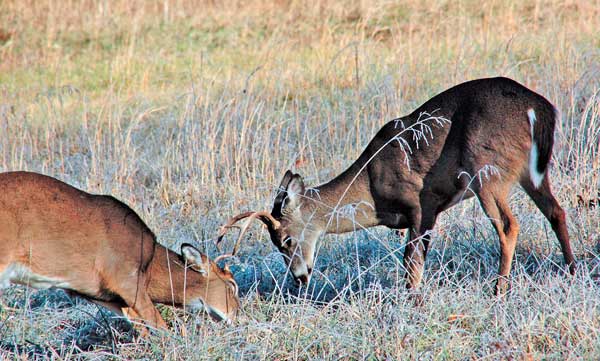
What works for one hunter, another may scoff at; here are three approaches to getting your big buck.
By almost all accounts, the peak of the whitetail deer rut arrives in various parts of South Carolina in late October.
Hunters look forward to those fleeting few weeks when heavy-horned bucks actually take leave of their senses — in a relative manner of speaking. Books have been written about all the tactics that a hunter can use to get within range of a big buck.
A lot of them actually work — for a lot of hunters. But there’s no simple way to tell anybody how to approach the peak of the rut that will get that hunter a shot at a nice buck. One tactic might work for one hunter, and another hunter will reject it out of hand. That same hunter might do something radically different from other hunters, but if it puts a nice buck in the back of his truck every year or so, it’s worth investigating.
Three hunters who are among the most successful of those afield in South Carolina are Brian Carroll of Charleston, Bill Biggerstaff of Clover and Shane Shires of Cliffside, N.C. — who lives just across the state line and does all of his deer hunting in the Palmetto State.
The ways they approach November and the rut are remarkably successful — and remarkably different. One man’s trash can be another man’s treasure, so sift through their ideas, take home what you want and put the rest in the circular file.
Get in their way
Brian Carroll regularly takes more than a dozen deer every season, hunting all over South Carolina, from the Lowcountry near his home in Mount Pleasant to areas around Spartanburg, Cheraw and Columbia.
His long-held belief is that the hunter who puts himself in the best location will kill the most deer — and an occasional trophy buck — no matter what other details he takes care of.
Carroll uses no scent inhibitors, really doesn’t hunt the wind that much, and he doesn’t really believe in grunting, rattling or using deer lures. He even ignores rubbed trees and scrapes — to a point. But every season, he takes deer, some of theM nice bucks, with a variety of weapons including bow, rifle and pistol.
Clearly, he’s got to be doing something right.
“I concentrate on areas where there are big numbers of deer, and if you hunt in those places — and you’re out there enough — you’re going to luck into a big buck every year or two,” said Carroll, who admits that he keys in on food sources from the first day of the season, rarely changing locations once he finds a place that deer are consistently using as a dinner table.
When he hunts in the Lowcountry, he keys on fields where good numbers of deer are feeding on agricultural crops, then scouts the woods surrounding the fields and sets up along trails that lead back to bedding areas. In the Upstate, it’s not that easy, he said.
“Hunting in the Lowcountry and Upstate is amazingly different — like night and day,” he said. “In the Lowcountry, you find an open field and work your way back in the woods on the way to their bedding areas. You try to pattern the movements of those big groups of does.
“Finding does in the Lowcountry is a whole lot easier than in the Upstate. In the Upstate, you do a lot more scouting, keying in on does you find around white oaks, then, you stay around those white oaks.
“A buddy taught me one time, when you’re walking in with your (climbing) stand on your back, stop at the top of the ridge before you walk to where you’re going to hunt and just listen,” he said. “You are listening to hear where the most acorns are dropping. Where you hear the most acorns dropping, you hunt that tree, because later in the day, the does are going to do exactly what you did. They’re going to stop and listen, then go right to the tree that’s dropping the most acorns.
“They’ll go to the same tree over and over if it’s the one, or it may be a different tree dropping more of them on a different afternoon.
“More than anything else, it’s a time-place thing — being at the right place at the right time,” he said. “You want to be in an area where you’re seeing a lot of deer. If you’re not, you won’t be in position to see that one big buck. He’s got to be with the crowd if he wants to breed most of the does. That puts him on their travel pattern. If he doesn’t do that, he has to leave some for the little guys.”
Travel patterns can also be dictated by outside factors. Carroll said that hunting pressure from neighboring tracts of land in an area can effectively move deer around — to your advantage. And what area farmers might be doing, especially in the Lowcountry, can move bucks and does around, changing their feeding patterns as quickly as you can turn a light switch on or off.
“If there’s a cornfield that’s going to be cut on Nov. 2, you better be there. Those deer will pile into that field,” he said.
That’s one reason he refuses to set up over scrapes or rubs. He may put a trail camera out on a hot scrape to see what kinds of bucks are showing up, but he plans to be around the does during the low-light periods when deer movements are most likely to put animals under his gun — or bow.
“I do believe that the moon phases is absolutely, 100-percent important,” he said. “If the moon is overhead or underfoot, you’re right. Anything else, you’re just wasting your time; you might as well be fishing.
“My prime time to hunt will be the week before and the week after the full moon. You want the moon to be in the sky in the afternoon when the deer are usually moving. If you can get to your stand without deer noticing you, if the moon is right, and if you’re on a movement pattern, you’re putting multiple factors in your favor.
“I am a hunter of convenience. I hunt them at the best times. You can hunt all day, but it’s better during the peak periods of natural deer movement. If you hunt at the right place, at the right time, deer will be there and it will happen.”
Thick, thick, thick
Like Carroll, Shires doesn’t change his hunting location very much from the beginning of the season to the end. He scouts extensively early in the season, knowing that bucks in the Upstate — where he hunts on two big pieces of hunt-club property — are likely to be laying down plenty of sign as early as September.
“I’ll try to find a buck’s core area, an area they’re tearing up, and I’ll try to get in there before they get to running does,” he said. “If I find a buck in his core area, I’ll go in there and sit — I won’t leave. If I know he’s bedding in an area, I’ll get in and sit down until 3 o’clock and never move, because a lot of times, at 1 or 2 in the afternoon, that deer will get up and start moving around, maybe go make a scrape, a rub. They pattern people; they know the middle of the day is usually safe.”
At the peak of the rut, Shires will often not get into the woods until 10 or 11 o’clock in the morning — and not just because he has a third-shift job. He knows a big buck will be back in heavy cover in the middle of the day — even at the peak of the rut.
He tries to locate his stands along the edges of the buck’s core area, and he really likes to get on the side that’s between that area and the feeding grounds that most of the does in an area will be using. He won’t go to the feeding area and back off; he just gets on the edge of the buck’s home ground, in the direction of the does. He’ll rattle, he’ll grunt, he’ll make mock scrapes of his own and put up a trail camera to see what kinds of bucks he’s dealing with.
“I hunt the wind,” Shires said. “I use Scent Lok; I keep my hunting clothes in a bag, and my boots never touch asphalt. I don’t get dressed until I get out of the truck. If I scout in clothes, I don’t hunt in them until I’ve washed them.
“I rattle and grunt — I’ve rattled the same 8-pointer back to the trunk of my tree three times the same day — and I like to hunt the thick stuff. I’ll get on the edge, and he’ll come out and get downwind of a food source and scent-check for does. He’ll skirt the edge, winding the fields for does.
“And when you’ve had a stand in one place for a while, you can go back in the cover and see trails they’ve made to get around that stand. Then, you can set up on the downwind side and catch ‘em slipping around behind you.
“But you’ve got to stay in there. It’s like turkey hunting. A lot of people like to go get them off the roost, or run and gun,” he said. “But I do my damage in the middle of the day. If I know a turkey will come to a place most every day, I’ll go sit there and hardly call and wait for him. It’s the same way with a big buck.”
Shires said deer hunters in the area he hunts believe that the rut starts as early as the third week in October and lasts through the second week in November — but not all of them agree on the particulars. He knows it’s about to break loose when he starts to see or hear about bucks being hit by cars, and he checks with area taxidermists; when they’re getting big bucks in to mount, he knows the rut is on.
“I think it really ramps up the first week of November,” he said. “I’ve always believed in the moon, and I think the second full moon after the fall equinox kicks it off.
“But I’m nobody special. I’m just a country boy who likes to hunt.”
Open, but comfortable
Veteran hunter Bill Biggerstaff said that South Carolina deer hunters rarely experience the kind of crazed, full-blown rut that hunters in northern climates do — where cold, cold weather kicks bucks into a near-maniacal state.
“I’ve always said that South Carolina doesn’t have a full-fledged rut the say they do in Montana, Minnesota, Wisconsin — places like that — because we don’t have the cold weather that really drives it,” he said. “The bulk of our rut, I think, is nocturnal. Our deer will go into a rut, but it’s not as drastic. It can’t be when you can go to a (high school) football game on a Friday night in a long-sleeved shirt and be comfortable.”
But he does believe that the peak of the rut is the time to kill a big buck, if for no other reason than it’s the one time of the year when a buck lets his guard down. And that means you’re as likely to see one in an open field, chasing does, as you are in the thickest of honeysuckle patches or tucked into a blowdown tree.
“The main thing I do is hunt according to where the food is, because that’s where the does are,” Biggerstaff said. “When the rut approaches, I’ll move out of the woods. Bucks are going to get in open places, because they’ve got to get their business done. The does are in the field, and he’s got to get his business done. Plus, he’s gonna get stupid, because his confidence level is way up.”
Biggerstaff said that he’s always pointed to the week of Thanksgiving as the time you’re more likely to catch a big buck doing something stupid. And part of that may not key on the timing of the rut as it does other factors.
“The deer are going to be out moving around. You’ve got dogs on the ground, because both rabbit season and bird (quail) season are open. Deer are more vulnerable, they’ve got to be moving to get their business done, and two of the biggest hunting seasons in South Carolina are opening up — with all of those dogs in the woods,” he said.
Biggerstaff searches out agricultural fields for feeding does. He knows that when bucks start to move, they’re going to meet the does on their turf — and that’s usually munching on the remnants of a corn or soybean harvest.
“If you see does coming out in the open, he’s going to be there,” Biggerstaff said. “I want to be on the edge of a field; I want to have some cover, but I don’t want to have to shoot through it.
“And any field I’ve got is going to have a comfort zone around it, 10 or 15 feet wide, either broomstraw or scrub oaks, that kind of thing. That way, he doesn’t have to come out of the deep woods dead into an open field. He’ll stop in that comfort zone where he thinks he’s got some cover.
“You know, I learned that at a quail seminar at the (SCDNR’s) Webb Center, about leaving an edge around your field grown up for the quail. And it made perfect sense to me for deer, too.”
Biggerstaff doesn’t rattle much, but he does grunt aggressively. He believes that when a buck’s curiosity level is up, he’s more likely to come check out those kinds of noises. Of course, Biggerstaff said that killing a big buck is almost an accident — even if it happens thousands of times a year across South Carolina.
“Here’s the way killing a big buck goes,” he said. “One day, you’ve got him figured out. The next day, he’s got you figured out. The day you kill him is the day that both of you screw up.”

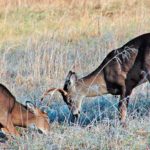
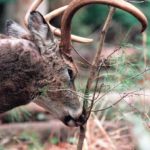
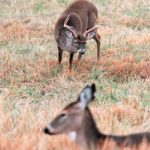
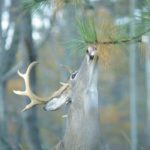
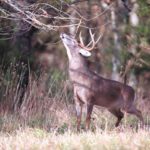
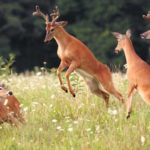



Be the first to comment